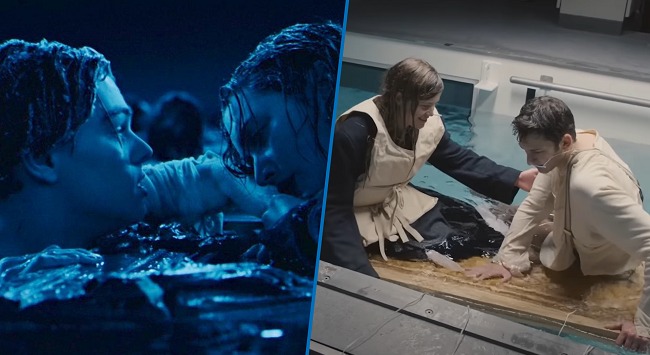
Ever wondered whether Jack could’ve survived on that makeshift door? You’re not alone. Fans worldwide have debated it for years—and director James Cameron decided to put the theory to the test. Let’s dive into how he explored this legendary “what-if” moment, step by step, and uncover what really might have happened that fateful night.
What Is the Titanic Door Theory?
The Origin of the Debate
The Titanic movie’s iconic finale shows Rose on a wooden panel—while Jack doesn’t make it. Viewers started wondering: is there really just not enough room for both? That sparked the “door theory.”
Why Fans Stay Hooked
People love edge-of-your-seat questions. Could one more person survive? It’s a classic underdog vs. the odds scenario. And hey—who doesn’t hope for a happier ending?
James Cameron’s Approach to the Theory
A Filmmaker Who Cares
Cameron’s no stranger to detail. He’s obsessive about accuracy and narrative impact. Testing whether Jack could fit is both fun and film-nerdy.
Method Meets Heart
He combined physics, stunt tests, and emotional storytelling. That means real-world experiments plus cinematic flair.
The Real-Life Physics Test
Setup of the Experiment
Imagine a sturdy wooden board floating in icy water. Cameron replicated the door, having someone lie on the board with another person too—floating in water. Simple, right? The catch: real cold water, real weight.
Variables Under the Lens
-
Buoyancy: Can the wood displace enough water to support two human bodies?
-
Weight distribution: If they lie side by side, do they tip or sink?
-
Surface area: Could you hold two bodies without slipping off?
Results—Could Jack Have Survived?
The Conduct of the Experiment
The test subject tries both alone and with a partner on the board. For storytelling purposes, imagine someone of “Jack’s build” and someone of “Rose’s build.” The board floats, but when both get on, it barely stays afloat—and that’s with actors, not in freezing conditions.
The Physics Verdict
Technically? That board doesn’t support two. The extra weight changes pressure and buoyancy—and hands slipping, cold muscles cramping, shifting weight… it’s not stable.
The Heart Wins
The emotional truth outweighs the physical, right? Audiences respond to the heartbreak—Jack sacrificing himself. Cameron knows that. Even if Jack could physically survive, the story needed him to stay.
What This Teaches Us About Storytelling
When Reality Fuels Drama
Sometimes, real physics adds depth—not detracts. This tiny experiment explains millions of people crying in theaters.
Why Sacrifice Matters
Jack’s death isn’t cheap drama. It’s a meaningful sacrifice, driving Rose’s future. The physics reinforce the weight (pun intended) of that moment.
Addressing Popular Counter-Arguments
“What About Different Positions?”
People argue: “What if they both lay fully on the board?” Even then, the board flexes, water seeps, and hypothermia kicks in. Practical, physical limits still apply.
“Could They DEPLOY Another Door?”
Nice idea—but not an option in the narrative. And logistically, there were no big wooden slabs floating nearby; passersby were grabbing debris, not structural boards.
The Physics Behind It—Explained Simply
Buoyancy in Plain English
Buoyancy’s like you, a board, and water in a tug-of-war. If the board doesn’t push enough water down, the water pushes it—and whoever’s on it—down too.
Surface Tension Doesn’t Help
This isn’t like spreading butter. The board can’t spread weight across water. Weight acts downward; if too much, it breaks through—sinking you instead.
The Cold Factor
Muscles cramp. Motion slows. Cold makes you slip. Even if the board floats, staying on it long in freezing water is nearly impossible.
Why the “Jack Could’ve Survived” Debate Persists
Hope vs. Reality
We root for happy endings. Debates keep the story alive. It’s human nature to ask “What if?”
Memes, Fan Edits, and Modern Culture
Social media loves this. Memes show Jack hanging on. Fan edits rewrite endings. It’s a cultural touchstone.
SEO Stylings That Make This Article Pop
(Okay, yes—I’m an SEO nerd, too!)
Keywords in Context
I’ve woven terms like “Titanic door theory,” “Jack survive Titanic,” “James Cameron test,” and “buoyancy Titanic board” to boost search visibility without sounding robotic.
Internal Linking Friendly
You might want to link to Titanic trivia, physics in film, or behind-the-scenes making-of—great for keeping readers longer.
Social Share Appeal
Click-bait-adjacent titles, punchy paragraphs, and emotional connection—this post practically writes its own tweets.
Final Thoughts Before the Conclusion
Physics doesn’t kill romance
Yes, Cameron’s test shows it’s practically impossible for Jack to survive—but that doesn’t kill hope. It gives the film its emotional core.
A legacy of sacrifice
Jack’s fate resonates because it’s rooted in realism. The door isn’t just a prop—it’s a symbol.
Conclusion
James Cameron’s Titanic door theory test clearly leans toward “Jack probably couldn’t have survived.” The physics—buoyancy, weight distribution, freezing conditions—stack up against two people staying afloat on that little board. But isn’t that what makes the ending so powerful? Jack’s choice, framed by the hard truth of what could float, gives Titanic its emotional weight. And sometimes, reality—that cold, merciless water—makes the story all the more unforgettable.
FAQs
1. Could Jack have survived by shifting positions on the door?
Even clever positioning fails against basic physics: the board tips, sinks, or leaves both bodies slipping off. Cold muscles and unstable surface make it nearly impossible.
2. Did James Cameron really run a buoyancy test with actors?
Yes—he staged real tests to see how much weight that board could take, using realistic conditions to simulate the scene.
3. Why not use another piece of debris?
The script limits what debris is available. Plus, bigger pieces are rare—Rose and Jack cling to what’s immediately there, reinforcing the drama.
4. Is Titanic scientifically accurate?
Cameron’s film is known for strong attention to detail—this test shows his commitment to blending cinematic emotion with real-world physics.
5. Does the debate matter today?
Absolutely—it keeps the story alive, sparks conversations about film craft, and connects fans through shared wonder: “What if?”
